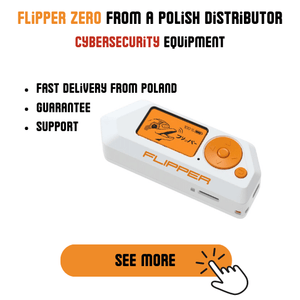
Mobile Device Security: How MDM Systems Protect Your Data and Optimize Management?
Can we imagine functioning today without mobile devices? Probably not. Smartphones, tablets, or laptops are tools that not only facilitate daily work but also allow for flexibility and mobility in performing tasks. With the growing use of these devices in companies, there is also a challenge related to their security. An unsecured device can become a serious threat to company data, and their loss or theft is a real risk. In response to these challenges, mobile device management systems, known as MDM (Mobile Device Management), are becoming an invaluable tool. Thanks to MDM, it is possible not only to ensure an appropriate level of data protection but also to effectively manage the fleet of devices, which allows companies to increase operational efficiency. In this article, we will look at how MDM systems protect your data and how they optimize mobile device management in companies.
From this article, you will learn about:
-
What MDM (Mobile Device Management) is and what functions it serves.
-
How MDM systems increase the security of mobile devices.
-
How MDM systems work on smartphones, tablets, and laptops.
-
How MDM helps meet legal requirements for data protection.
-
What are the best practices for implementing and managing an MDM system.
-
How the MDM system functions in the Apple ecosystem.
MDM System – what is it?
What is MDM in cybersecurity? MDM (Mobile Device Management) is a system used to manage mobile devices in an organization. Its main task is to ensure an appropriate level of security for data stored and processed on mobile devices. The MDM system allows IT administrators to remotely manage devices that are used by company employees, regardless of whether they are smartphones, tablets, or laptops. With MDM, it is possible to remotely monitor the status of devices, install applications, implement security settings, and also block the device in case of theft or loss. Now that you know what MDM is and what the MDM acronym means, it's time to move on to the principles of its operation.
How does the MDM system work on phones?
For mobile devices, such as smartphones or tablets, the MDM system works through an application that is installed on each managed device. After installing the MDM application, administrators can remotely monitor and control the device, which allows for:
-
Application installation – the MDM system enables remote installation of required applications on devices, ensuring that all devices in the organization use the same, current versions of software.
-
Update management – MDM allows for centralized management of operating system and application updates. This way, administrators can control when and which updates should be implemented on devices.
-
Protection against data loss – it's worth mentioning a very useful option here! In case of loss or theft of a device, the MDM system allows for remote wiping of data from the device, which prevents data leaks. It is also possible to remotely lock the device.
MDM and the Apple system
Many people have doubts in this matter, so it's worth mentioning right away that the MDM system is also an integral part of the Apple device ecosystem. MDM in the Apple system offers advanced device management features and provides a secure working environment on iOS, iPadOS, or macOS devices. Thanks to integration with Apple Business Manager or Apple School Manager, administrators can remotely configure devices, manage applications, and also monitor their status. Apple enables remote configuration of devices without the need to physically open them, which is particularly important for large organizations. Importantly, Apple devices also support the Device Enrollment Program (DEP) function, which automatically registers devices in the MDM system after they are turned on, ensuring consistency of security settings and management policies.
What benefits does implementing an MDM system bring?
Knowing how this system works, you probably can guess how many advantages it brings. Well, administrators can immediately respond to threats by blocking the device or removing sensitive data in case of loss. Instead of tedious management of each phone or tablet individually, the company also gains one central tool for monitoring and configuring the entire fleet of devices, ensuring mobile device security throughout the enterprise. Thanks to this, all equipment operates according to company policy, and their users don't have to worry about manual updates or installing necessary applications. Isn't that super convenient? We also can't forget about compliance with regulations. Unfortunately, today's data protection regulations, such as GDPR or HIPAA, impose increasing responsibility on companies, and the MDM system actually becomes a guarantor of compliance with these requirements. Automatic implementation of security policies, data encryption, or enforcing strong passwords – all this ensures that company information remains protected, and the enterprise is not exposed to penalties related to violations.
More and more organizations are combining MDM with physical security keys, such as YubiKey. This simple but extremely effective solution ensures that even if login credentials are intercepted, the cybercriminal still won't have access to company systems. Combined with MDM solutions, YubiKey keys allow securing the mobile work environment at an even higher level – both in terms of access to company resources and multi-factor authentication. Check out how to use YubiKey on mobile devices.
What are the three principles of MDM?
There are three principles that form the foundation of effective mobile device management in an organization, ensuring a balance between security, control, and user convenience. These are:
-
Data and device security, because the main goal of MDM is to protect company information and secure mobile devices against various types of threats (hacker attacks, malware or unauthorized access). MDM systems allow for data encryption, enforcement of password policies, remote locking or wiping of devices, and controlling application permissions.
-
Centralized management and control – MDM enables IT administrators to effectively manage the fleet of mobile devices from one place.
-
Compliance with regulations and company policy – MDM systems help companies comply with data protection regulations, such as GDPR or e.g., HIPAA (establishes federal standards protecting confidential health information from disclosure without patient consent). They allow for the implementation and automatic enforcement of security policies, which minimizes the risk of data leakage and potential legal penalties.
Also check out the article on the Sapsan blog dedicated to types of WiFi attacks.











